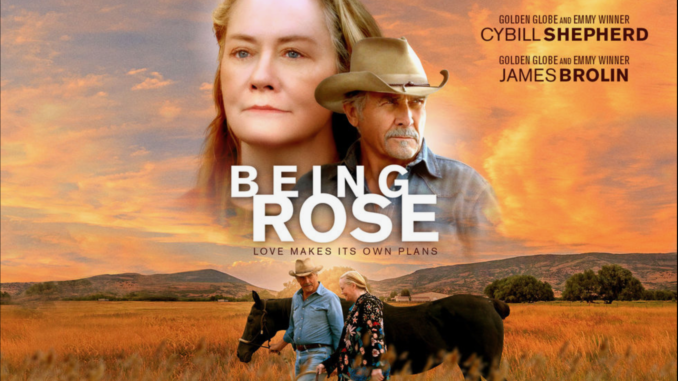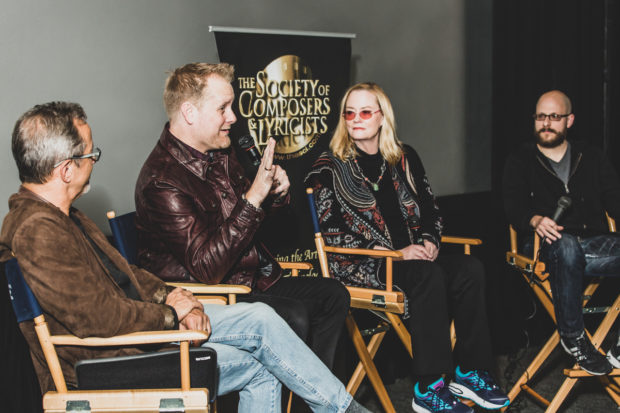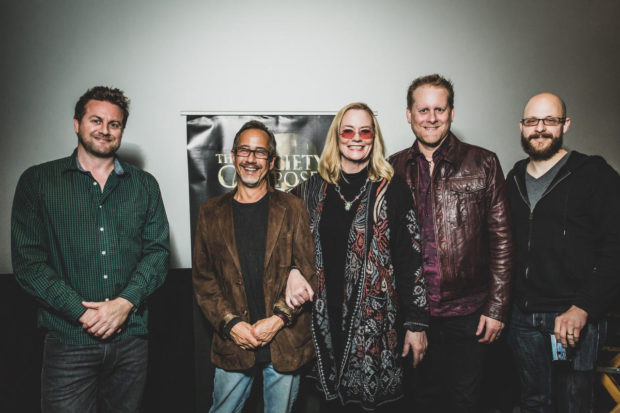
Review Fix chats with Composer Brian Ralston, who discusses his creative process behind the score of “Being Rose.†Breaking down what the process meant to him, as well as his goals for the future, Ralston lets us know why the film is a special one.

About Being Rose:
The dramatic love story, written and directed by Rod McCall, stars Cybill Shepherd, James
Brolin and Pam Grier. “Being Rose†follows the story of a widowed ex-cop (Shepherd) who
discovers that she may have a life threatening illness and decides to go on a solo road trip in a
motorized wheelchair. On her journey, Rose meets and falls in love with a charming cowboy,
Max (Brolin), who has to come to a crossroads of his own. Rose soon discovers more than just
the simple beauty of New Mexico.
Review Fix: What makes the music of New Mexico unique?
Brian Ralston: Having lived in Tucson, Arizona during my undergraduate college years at the University of Arizona, I definitely feel a connection with the desert southwest. Like its neighboring state of Arizona, New Mexico has a very spiritual quality to it. The cultural influences of the state are very much rooted in the Native American tribes from the region. Director Rod McCall is a long-time resident of New Mexico and all of his films are effectively a love letter to the state. Being Rose was entirely shot in New Mexico. In the film’s score…there were really two separate score approaches needed to underscore Rose’s (Cybill Shepherd) journey. One is her love story with the cowboy/rancher Max (James Brolin). For that music we definitely chose to be in a more country-western feel. But the other aspect of the score was underscoring Rose’s more spiritual journey towards the end of her life as she is battling a serious illness. And for that we chose to infuse Native American music and instruments into those cues of the score. Effectively, nature and the land were calling Rose “home†at the end of her life’s journey. Thus, this aspect of New Mexico’s Native culture was uniquely chosen to underscore that spiritual journey for Rose.
Review Fix: How did you prepare to score this film?
Ralston: As I previously mentioned, having lived in that area of the country for nearly a decade of my life, intimately knowing the musical influences of the region was something I felt very comfortable with. Some of my first demo cues for the film were stylistically Native American music and those musical ideas remained in the film throughout the post process. Much of the film’s temp score during the editing process consisted of my demo cues not composed to picture at the time. I had also scored another film previously, Crooked Arrows, that also used Native American instruments in its score, so I felt very comfortable in writing music with those instruments and textures in mind.
Review Fix: What was the process like compared to other films you’ve worked on?

Ralston: This was a unique process in that I was introduced to the director Rod McCall by the executive producer on the film, J. Todd Harris, and we seemed to hit it off right away. While I did create some MIDI mockup demos cues for the film…it did not really feel like an audition. It just organically felt like I began working on the score right away after a simple phone call. Whatever it was that Todd told Rod when he recommended me, I am very grateful. This was the first time I had really scored a project remotely another state away from the director. I flew out to New
Mexico for the spotting session in person and we devised a process for me to put up cues online for Rod to preview and comment on throughout the scoring process here in Los Angeles. That was a relatively new experience for me in that I tend to want to be in the room watching the director react to listening to my cues for the first time. There is so much one can learn from body language and from watching their reactions than just from a carefully crafted email of comments. I did not have the luxury of seeing Rod’s gut reactions upon his first listen to cues on this film. But eventually I felt like we were on the same page stylistically and soon he was giving me a great amount of creative freedom to write what I wanted for a scene.
Review Fix: How did you feel the first time you saw the completed film?
Ralston: Completed with my score and everything? I felt like we did what we set out to do. Rose’s journey to me feels real and at times spiritual and profound. At the film festivals we screened at, there are a few scenes where there was not a dry eye in the theater and those are the times when I know we nailed it for its target, baby-boomer audience.
Review Fix: What do you think your score adds that someone else couldn’t?
Ralston: That is a hard question to really answer. I am sure there are lots of talented composers who would have brought what they do best to this film. And in their own style and their own voice would have “nailed it.†For me…I am a melody person. I long for memorable, simple melodies that have the audience leaving the theater humming the theme. (That is what I use to do growing up in 80s and 90s.) Or when they hear the theme later on a soundtrack album, they are instantly brought back in their minds to re-living the movie or scenes over again. I feel we have a strong melody and theme for Rose, especially in “The Journey Begins†track and have developed and built on that throughout the score in cues like “Falling In Love†and “I Am Not Letting You Go.†Films that have strong melodic content in their scores tend to be more memorable in my opinion. I encourage my director colleagues to embrace unique, simple and memorable melodies and themes in their scores. The last decade or so has seen a trend where scores have tended to lack strong themes and melody out of fear of artificially influencing the audience’s emotional response to a scene. But isn’t that what we are setting out to do? The entire film is crafted to evoke emotional response. We shoot a scene in a specific way for effect. We color it in a specific way for effect. We edit it and choose our close-up shots and our establishing shots in a specific way to take the viewer on a 2-hour journey that we want them to take. While music playing under a scene is certainly not something that happens in real life, movies are not real life. They are real life escapes. They are art and craft. And music is certainly the one universal language we all understand and appreciate across cultures and language barriers. I fully acknowledge there are certainly ways to ineffectively use music wrong and too much. But in my opinion…memorable melodies, unique orchestrations and proper spotting and placement of how the music score is used is what elevates a film to a whole other level of cinematic bliss.
Review Fix: Any lessons learned through this creation for you?

Ralston: With the exception of some programmed synth textures in the score, most all of the score is performed live by 5 people. This was a great lesson in “less is more.†We did not want the score to sound too heavy or big. The film is intimate. Many scenes are just Rose and Max together on screen. A big orchestra would have felt too heavy. And I think with a much smaller ensemble focused around a handful of amazing solo musicians on their instruments shows that even with a small number of people, you can have a big huge sound. Recording in Los Angeles with Belinda Broughton as our Solo Violinist, Andrew Synowiec on all guitars, Chris Bleth on all Native Winds, Deane Ogden on drums and myself on all keyboards and synths allowed us to have an amazing performed score logistically on a budget that was quite reasonable for a smaller indie produced film.
Review Fix: What’s next?
Ralston: I am actually producing and scoring a Horror film called “Is Someone There?†The writer/director is a long-time colleague of mine, Tim Garrick, and Benicio Del Toro is one of our executive producers. Right now, we have just finished a short film that will play on the festival circuit in 2019. The short is a 15-minute chunk out of what would be the first act of the eventual feature, but it does stand on its own as well. And this short film is not like usual short films one sees at festivals. It has the look and polish of a top Hollywood feature. We have a professional crew at every stage and even recorded my score with a full orchestra at the Warner Bros. Eastwood Scoring Stage in Burbank, CA. As a producer on the film, my responsibilities have exploded a bit beyond just music department tasks, so this has been keeping me busy these days, but we are very excited to bring it to the world and hopefully soon, get the feature version of the film funded and greenlit as well. And as always, there are a couple other film projects I am excited to be scoring in 2019 as well.
Review Fix: Anything else you’d like to add?
Ralston: I just invite folks to check out the film, currently on most iVOD platforms as well as Amazon Prime video and Apple iTunes. We also currently have a digital copy of the score for sale released by Notefornote Music at most all of the digital retailers, but we are also working on a limited tangible CD version of the score as well in the next couple months. I am proud of what we have put together and honored to be working with Bryon Davis at Notefornote music on getting the score out there for folks to be able to listen to it.


Who sings the songs?